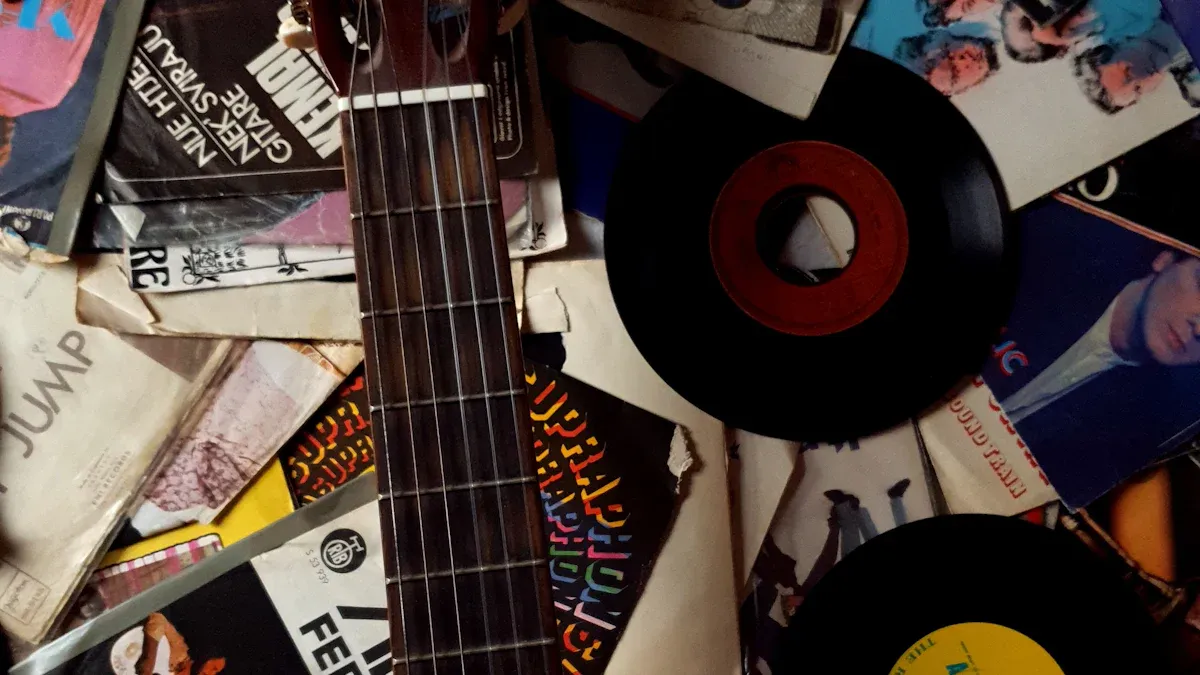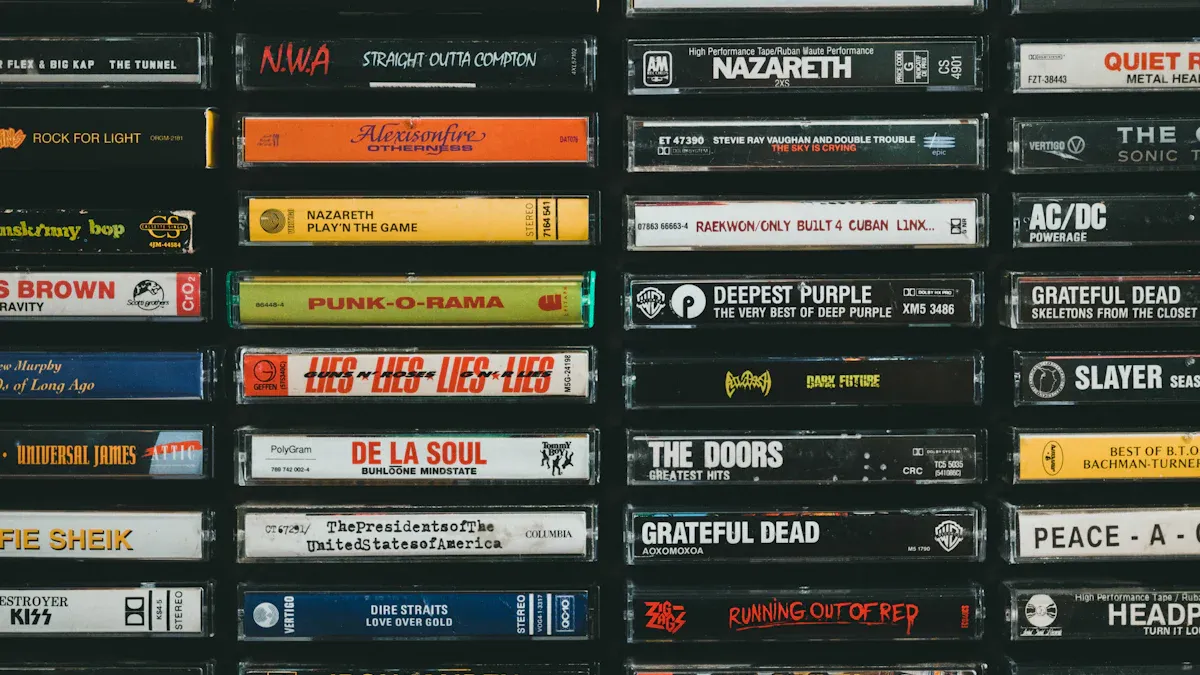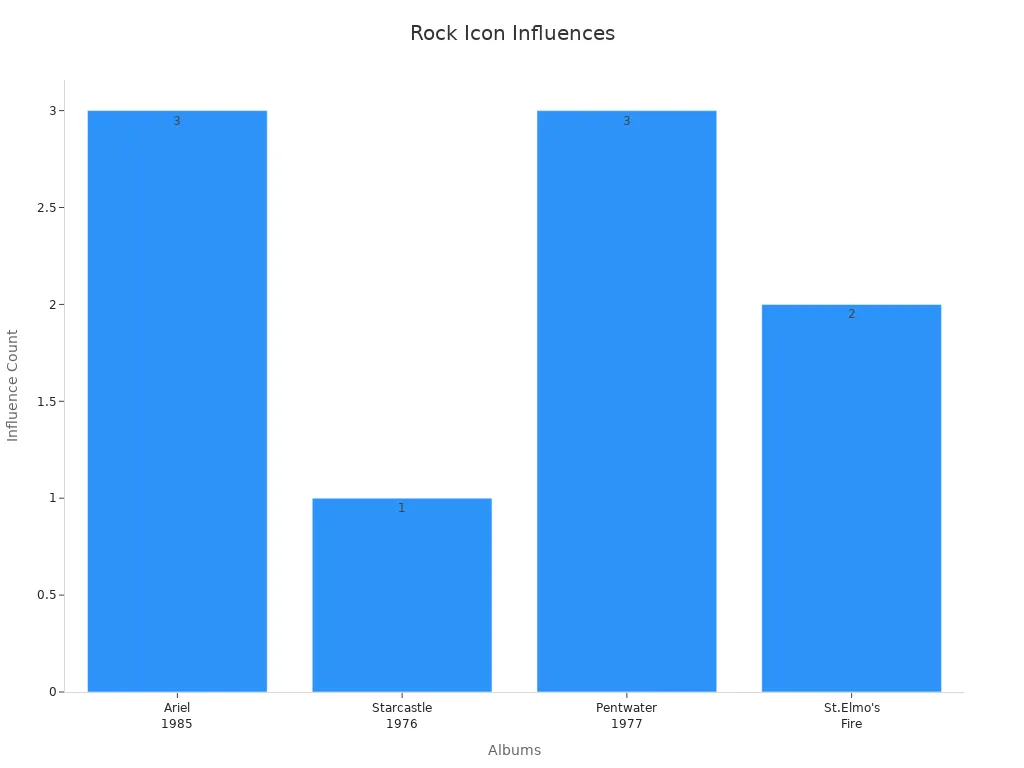
What You Need to Know About the Songs for the Deaf Album
The album Songs for the Deaf by Queens of the Stone Age has a special idea. It copies what it feels like to drive and listen to radio stations in California’s desert. The band put out this album on August 27, 2002. It mixes hard rock, stoner rock, and alternative rock. The table below lists important people who helped make it:
| Track | Producers / Artists / Credits |
|---|---|
| 1 | Tomoko Ida, Carlos López |
| 2 | Albert Hype |
| 4 | Jota Rosa, Mvsis |
| 7, 19 | Gibran Alcocer, Richie López, Lil Baby Grand |
| 8 | Young Miko, Lil Baby Grand |
| 9 | Mora, Zion |
| 10 | Young Miko, The Marías, J Balvin, Jowell & Randy |
| 11 | Daddy Yankee, Feid |
| 12 | Chris Lebron |
| 13 | Rauw Alejandro, Skrillex, Four Tet, Kevyn Cruz |
| 14 | Ozuna, Eduardo Vargas Berrios |
| 15 | Julieta Venegas, Mvsis, Tuiste, De la Cruz |
| 16 | Kris Floyd, Judeline |
| 18 | Chencho Corleone, Jon Leone |
| 19 | Álvaro Díaz |
| 20 | Xantos |
The album got great reviews for its brave sound and new style. Many people think it is very important in modern rock.
Key Takeaways
- Songs for the Deaf is a special album. It feels like a road trip in California’s desert. The album uses fake radio station sounds between songs.
- The album has popular songs like 'No One Knows' and 'Go With the Flow.' These songs made the album very popular. The album also got a lot of praise from critics.
- Dave Grohl played drums on most songs. He gave the album strong energy. The album has a hard rock and alternative sound.
- The band mixed many rock styles. They changed the volume and mood in the songs. This keeps the music fun and full of feeling.
- Songs for the Deaf is still important today. It inspires new fans and bands. People still listen to it on the radio and streaming playlists.
Album Songs for the Deaf: Tracklist

Full Tracklist
The album Songs for the Deaf features a unique set of tracks. The band designed the album to sound like a road trip through the California desert, with songs connected by fake radio station snippets. The official tracklist comes from primary sources, including verified quotes from band members and audio samples. This ensures accuracy and matches what listeners hear on the album.
Here is the full tracklist in order, including the hidden ghost track:
- You Think I Ain't Worth a Dollar, But I Feel Like a Millionaire
- No One Knows
- First It Giveth
- Song for the Dead
- The Sky Is Fallin'
- Six Shooter
- Hangin' Tree
- Go With the Flow
- Gonna Leave You
- Do It Again
- God Is in the Radio
- Another Love Song
- Song for the Deaf
- Mosquito Song (hidden track)
- The Real Song for the Deaf (ghost track)
Note: The album includes radio interludes between songs. These transitions help create the feeling of changing stations during a long drive.
Notable Songs
Some tracks from the album songs for the deaf stand out as especially important. Music databases like American Music and the Sheet Music Consortium help identify these songs by showing which tracks have the most cultural impact and recognition. These databases collect information about songs that appear in many places, such as radio, sheet music, and playlists. This helps listeners and researchers find the most influential tracks.
| Song Title | Why It Stands Out |
|---|---|
| No One Knows | The song became a hit single. It features a catchy riff and strong drumming. |
| Go With the Flow | This track has a fast tempo and energetic style. It received heavy radio play. |
| First It Giveth | The lyrics explore the highs and lows of creativity. The song is a fan favorite. |
| Song for the Dead | The track features powerful drumming by Dave Grohl. Many fans praise its energy. |
| The Sky Is Fallin' | The song shows the band's ability to mix melody with heavy rock sounds. |
| Mosquito Song (hidden) | This acoustic track closes the album with a haunting mood. |
No One Knows and Go With the Flow both received critical acclaim and frequent airplay. These songs helped the album songs for the deaf reach a wider audience. Song for the Dead and First It Giveth also appear in many live performances and playlists, showing their lasting popularity.
Album Details
Release Info
Songs for the Deaf was released on August 27, 2002. Queens of the Stone Age put it out with Interscope Records. The music is hard rock, stoner rock, and alternative rock. Official sources like the album cover confirm these facts. Press releases also share the release date, label, and genre. This helps fans and collectors check the information.
- Release Date: August 27, 2002
- Label: Interscope Records
- Genre: Hard rock, stoner rock, alternative rock
Note: Music press releases and album booklets give true details. They help people know the facts about albums they like.
Band and Production
Queens of the Stone Age made the album with a skilled team. Josh Homme was the main songwriter, guitarist, and singer. Nick Oliveri played bass and sang on some songs. Dave Grohl, from Nirvana and Foo Fighters, played drums on most tracks. Mark Lanegan also sang on the album.
The production team worked to make the album sound special. They added radio station sounds between songs. These short skits make it feel like a drive in the desert. It is like tuning into new stations as you go. This idea makes the album different from other rock albums.
| Contributor | Role |
|---|---|
| Josh Homme | Guitar, vocals, production |
| Nick Oliveri | Bass, vocals |
| Dave Grohl | Drums |
| Mark Lanegan | Vocals |
| Eric Valentine | Producer, engineer |
Music industry rules make sure everyone gets credit. The album booklet lists all the people who helped. This shows respect for each person’s work.
Musical Style

Sound and Influences
Queens of the Stone Age made a sound that mixes many rock styles. The band uses loud guitar parts and strong drums. They also change how loud or soft the music is to keep it interesting. Many music experts say the band shows feelings through their music.
- The sound of the guitars or bass helps set the mood.
- Sudden changes in how loud the music is make it exciting.
- Using low bass or high cymbals changes how people feel.
- Sometimes the music is simple, and sometimes it has many layers. This changes how the songs feel.
The band also gets ideas from other famous rock bands. Midwest progressive rock bands liked groups such as Rush, Yes, and King Crimson. The table below shows how some albums from this area use these ideas:
| Band/Album | Region | Documented Influences from Rock Icons |
|---|---|---|
| Ariel (Perspectives, 1985) | Chicago suburbs | Early 80s Rush, King Crimson, Doldinger’s Passport (fusion elements) |
| Starcastle (Starcastle, 1976) | Champaign-Urbana | Yes (noted as a major influence, with a distinct American songwriting touch) |
| Pentwater (Pentwater, 1977) | Chicago | Styx, Gentle Giant, Emerson, Lake & Palmer (ELP) (notably an instrumental suite reminiscent of ELP's Tarkus) |
| St. Elmo’s Fire (Live at the Cleveland Agora) | Cleveland | King Crimson, late 70s Rush (progressive rock influences) |

Songs for the Deaf uses these music tricks and ideas. This helps the album sound different from other rock albums today.
Concept Overview
This album has a special idea. The band puts the songs in an order that feels like a trip in the desert. Each song connects with fake radio sounds. This makes it feel like you are changing stations while driving. The album tells a story, but not with a strict plot.
Some old albums use ideas like this too. Woody Guthrie’s "Dust Bowl Ballads" tells one story in all the songs. Frank Sinatra’s "In the Wee Small Hours" has songs with the same sad feeling. Green Day’s "American Idiot" uses characters and a story that goes through the album. The table below shows how these albums use different ideas:
| Album & Year | Conceptual Arrangement Type | Narrative Flow Description |
|---|---|---|
| Woody Guthrie - Dust Bowl Ballads (1940) | Unified narrative and theme | Songs revolve around one narrative about hardships during The Great Depression in Oklahoma. |
| Frank Sinatra - In the Wee Small Hours (1955) | Central mood and lyrical theme | Songs organized around a mood of late-night isolation and lost love, emphasizing mood over strict narrative. |
| Funeral for a Friend - Tales Don't Tell Themselves | Multiple perspectives, non-chronological flow | Story told from viewpoints of a man and his family; song order chosen for flow rather than chronological order. |
| Green Day - American Idiot | Distinct narrative with characters | Features characters and a continuous narrative quality throughout the album, creating a story arc. |
The radio sounds and road trip theme make the album feel like a real journey. This creative idea helps people remember the album and enjoy listening to it.
Reception
Critical Response
Critics gave Songs for the Deaf strong praise when it first came out. Review sites like Metacritic collect scores from many sources and give more weight to well-known publications. Metacritic uses a system that shows if an album gets "universal acclaim" or not. This helps people see how much critics like an album. The platform even won Webby Awards for its work in ratings and reviews, showing its influence in music.
Statistical studies show that rock albums, including Songs for the Deaf, often get a wide range of scores. For example, Pitchfork reviews show that rock albums have an average score of 7.05, which is a bit lower than folk or country albums. Over time, scores for rock albums have gone down faster than for other genres. Pitchfork tends to give higher scores than some other sources, like Fantano. These trends show that critics look at many things when they review an album, such as the style, the year, and the review source.
Pitchfork reviews also show that when more albums come out in a year, the average score can go down. This may happen because critics get tired or because there is more music to compare. From 2015 to 2017, both the number of albums reviewed and the average scores went up. This likely happened because streaming made music easier to find. Critics do not seem to favor one genre, so rock albums like Songs for the Deaf get both high and low scores.
Legacy
Songs for the Deaf has kept its place in rock music for many years. The album’s songs still appear on major playlists and get played on FM rock radio. Many fans save these songs on Spotify’s Rock Classics playlist, which has over 12 million saves. The band’s music continues to reach new listeners through streaming.
The table below shows how some classic rock albums keep their legacy alive:
| Metric / Indicator | Details / Examples |
|---|---|
| Spotify Monthly Listeners Growth | The Beatles: 12.4M to 33.1M; The Rolling Stones: 11.4M to 26.8M |
| Billion-Streamed Songs | "Here Comes The Sun" and "Paint It, Black" both have over 1 billion streams |
| Playlist and Radio Presence | Songs featured on major playlists and FM radio |
| Touring and Live Performances | Bands like The Rolling Stones and The Who still tour and play live |
| Fan Engagement and Legacy | New releases, live sets, and covers keep the music fresh for new fans |
Songs for the Deaf remains important because it still gets played, covered, and talked about. The album’s creative style and lasting popularity help it stand out in rock history.
Songs for the Deaf changed how many people think about modern rock. The album still inspires new bands and music fans. Many listeners find new details each time they play it.
- Fans often explore other Queens of the Stone Age albums after hearing this one.
- The band’s creative ideas set a high standard for rock albums.
Songs for the Deaf holds a special place in the band’s history and continues to shape rock music today.
FAQ
What makes Songs for the Deaf a concept album?
Songs for the Deaf uses fake radio station sounds between tracks. These sounds create the feeling of a road trip through the desert. The album tells a story with music and radio transitions.
Who played drums on most of the album?
Dave Grohl, known from Nirvana and Foo Fighters, played drums on most tracks. His powerful drumming gave the album its strong and energetic sound.
Why do people call "Mosquito Song" a hidden track?
" Mosquito Song" does not appear on the official tracklist. The band placed it at the end of the album as a surprise for listeners. Many fans enjoy finding hidden tracks like this.
Did the album win any awards?
Songs for the Deaf did not win a Grammy. However, critics praised it highly. Many music magazines and websites included it in their best albums lists.
Can new listeners enjoy the album today?
Yes! The album still sounds fresh and exciting. Streaming platforms and playlists help new fans discover its music. Many people say the album stands the test of time.